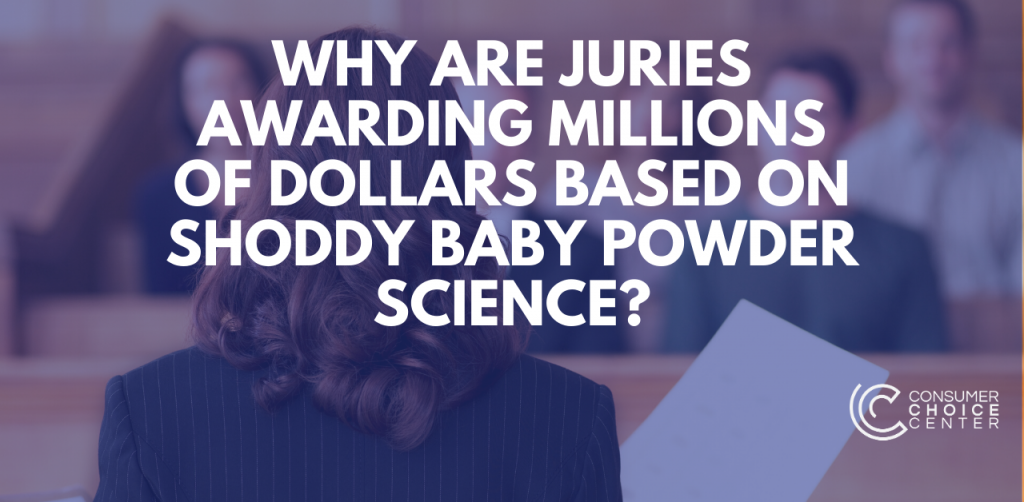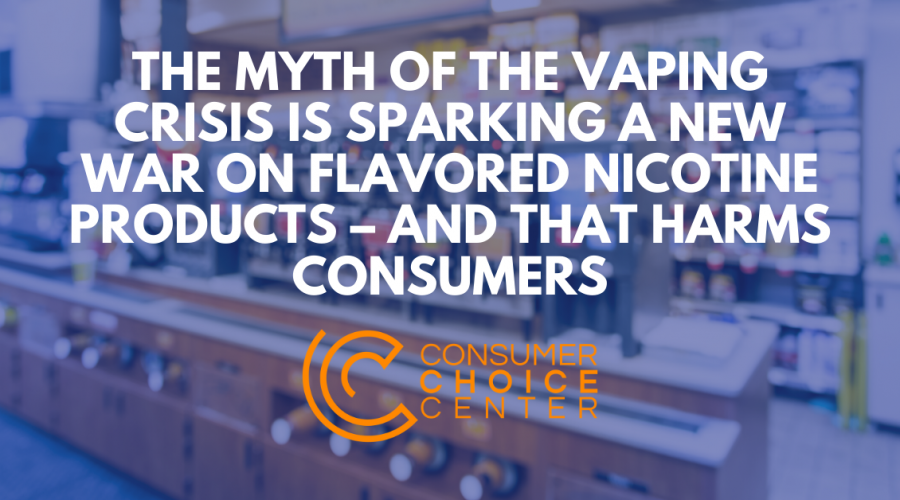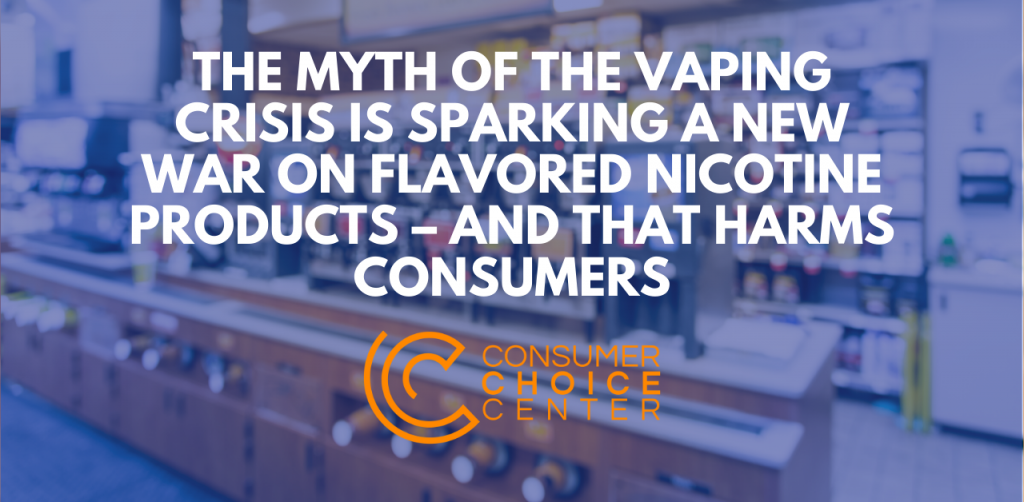Why are juries awarding millions of dollars based on shoddy baby powder science?

There’s something amiss in our nation’s courts.
Just last week, a New Jersey jury awarded $750 million to four people who claimed baby powder products made by Johnson & Johnson had contributed to their cancer diagnoses.
In the end, that amount will actually be reduced to $186 million, a feature of New Jersey law that caps award amounts to five times the damages declared by previous rulings.
What’s amiss in this ruling is just how much the jury verdicts stray from actual scientific opinion.
Plaintiffs and their attorneys claim the company has knowingly sold asbestos-tainted talc in its baby powder for years, even though scientific studies have yet to prove a definite link between modern-day talc and any cancers.
The same has been echoed by the American Cancer Society, and the same conclusion was reached by a wide-ranging 2014 study published in the Journal of National Cancer Research Institute.
Last month, the largest-ever study on baby powder and talc was published in the Journal of the American Medical Association. It followed 250,000 women who used the product and found “there was not a statistically significant association” between using baby powder and any link to ovarian or other cancers.
Why, then, would the juries have sided against the science?
In the last verdict in a similar case, a St. Louis jury sided with Johnson & Johnson, finding no proof in the cases furthered by plaintiffs.
Others, though, have delivered record awards. But why?
It’s a combination of ambitious tort lawyers and misleading journalism.
Tort Lawyers and the Long Legal Pursuit
In the trial mentioned above, and in other cases I profiled in my article in the Miami Herald, attorneys specializing in injury cases have elevated what would otherwise be an open-shut case based on science to become a cause célèbre based on penalizing a large company with a familiar brand.
Indeed, the lawyers who argued this case against Johnson & Johnson made the company’s global revenue and its CEO’s compensation the baseline for compensation. It was the first trial in which J&J Chief Executive Alex Gorsky testified before a court.
In his final words to the jury, Panatier made it clear that the focus of their verdict should be on Johnson & Johnson’s conduct. “So when you think about the punitive damages, what number punishes and deters them, you’ve got to think in Johnson & Johnson terms,” he said, noting that Johnson & Johnson was a “$60 billion company.” “And you can make them pay attention. And that is an immense responsibility and it is an immense, immense task that you’ll have to try amongst the 10 of you to determine what that number should be.”
New Jersey Law Journal
What was missing from their core argument was any definitive proof that the plaintiffs were exposed to asbestos from the talc in the baby powder – or that this is how they contracted mesothelioma, a specific lung cancer.
An analysis provided by FDA and mineral experts last week could only conclude that the mineral products in question are likely too small to be adequately tested, and thus new testing would be required.
But again, that conclusion does not negate the various and recent studies that have found no connection between the baby powder and cancer.
Despite that, it hasn’t stopped leagues of injury lawyers from lining up to take their shot at winning a multi-million dollar verdict. More than 16,000 class-action plaintiffs have been assembled to sue the company in other jurisdictions.
The interest of injury lawyers, who receive sometimes up to 40% or more of the winnings, is quite clear.
Media Malpractice?
When it comes to reporting on the facts of these trials, the science is often downplayed in favor of convincing legal arguments and sensationalist headlines.
For news outlets such as Reuters and the New York Times, the decades of scientific studies are often overlooked – or at the very worst, neglected.
An oft-cited example is on the company’s cautious recall of thousands of baby powder products in October. But further tests concluded none of the batches of the company’s baby powder contained asbestos, a fact admitted by Reuters.
Most internal J&J asbestos test reports Reuters reviewed do not find asbestos. However, while J&J’s testing methods improved over time, they have always had limitations that allow trace contaminants to go undetected – and only a tiny fraction of the company’s talc is tested.
Reuters
As such, it’s difficult to prove what so many lawsuits and investigative allege. Not enough for scientific analysis, but maybe enough for a courtroom and a few headlines. Herein lies the issue.
In the reports of the baby powder cases, these products and cancer are too casually linked. At least according to the studies we have provided to us.
For real understanding about what’s in the products we use and consume, it’s best to adhere to the studies and academic literature. Of course, no one wants to use anything that could prove harmful to them, and consumers should always be wary.
But, in that case, shouldn’t we look to science for those answers rather than 12 men and women sitting in a jury box? Shouldn’t that be the standard we employ for all of the important health issues of our time?
That, along with many other reasons, is why we need true legal reform in this country. We cannot afford to allow real science to be voted away in jury boxes and courtrooms.





